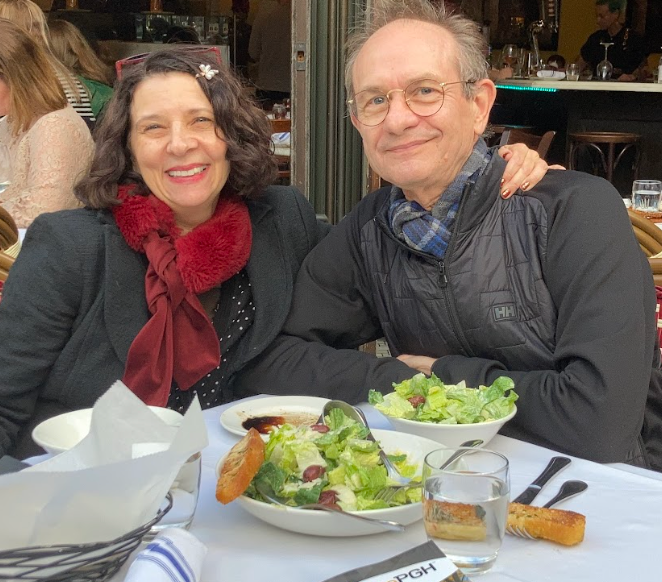
I am lying on the floor in a fetal position sobbing in front of my wife, Laura. She and I await the results of the latest CT scan to see if my pancreatic cancer has returned. The anxiety to learn my fate has triggered an episode of depression so deep, even the Prozac and Wellbutrin I take daily could not prevent it. Luckily, several days later, the results show I am still in remission, but my misery continues.
It’s now two years later, and, at 67, I have beaten the odds and been disease-free for four years. Pancreatic cancer is known for its brutal lethality, though. For 90% of patients, it will recur and kill within five years. So, my oncologist has been sending me for follow-up scans every three months since my chemotherapy ended. If the tumour returns, she wants to obliterate it before it has a chance to spread.
In spite of my being profoundly grateful to be a survivor, the routine of remission and retesting has felt like purgatory. Dread fills my body in the weeks leading up to my scans. An all-too-real fear of death plagues my every waking moment. I can’t sleep. It has also taken a toll on my marriage. I get edgy, snapping at Laura for trivial things like leaving dirty plates in the sink.
A few months ago, my thoughts turn darker. For the first time in my life, I begin to feel death might be preferable to my ongoing emotional pain.
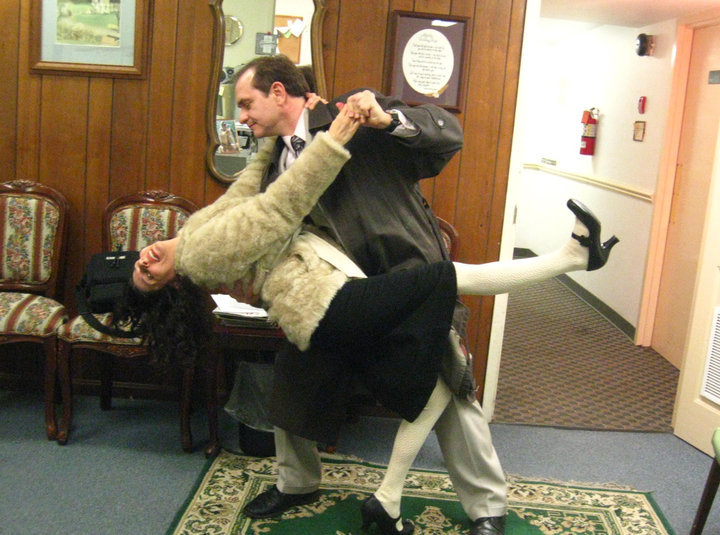
By chance, Laura and I come across Michael Pollan’s 2022 four-part Netflix series, “How to Change Your Mind.” It traces the history of four psychedelic substances — psilocybin, peyote, LSD and MDMA (ecstasy). The first two have been used as medicine in traditional cultures going back to ancient times. In the 1960s, Western-trained psychologists used them on patients to treat problems including post-traumatic stress disorder, depression and addiction.
One profile really gets my attention. Doctors in a clinical trial are administering mushrooms containing psilocybin to a woman with a cancer diagnosis. She experiences transcendent visions that make her feel one with nature and confirm her spiritual beliefs. She says she no longer fears death.
That’s how I want to feel. I vow to join one of these studies as soon as possible. I am not looking to take these psychedelics recreationally ― I want to work with doctors and therapists who can guide me through the healing process.
Searches on clinicaltrials.gov reveal many studies using psychedelics, but they are either too far away or I don’t fit the criteria. Then I remember a friend telling me years ago that her husband, a psychologist, was treating PTSD in veterans. I call him to see if he has any advice. He confirms the only legal way I can get treated using psychedelics is to be part of a clinical trial.
What he says next makes me wonder if the universe is conspiring with me. He actually works for one of the clinics, Sunstone Therapies, featured in Pollan’s documentary, which is not too far from Washington, D.C., where I live. They will soon start a clinical trial using MDMA to test its effectiveness in alleviating adjustment disorders, like anxiety and depression, specifically for cancer patients and their significant-other caregiver. I can’t believe my luck — it seems as if the clinical trial has been designed for my wife and me. If Laura and I get in, we’ll be getting a twofer — something to cure our individual anxiety plus couples therapy. He tells me how to apply, which I immediately do.
Not long after, the centre contacts us for screening. After two weeks of interviews and paperwork, we get the news: We will be the first couple in the U.S. to be treated with MDMA in a clinical trial.
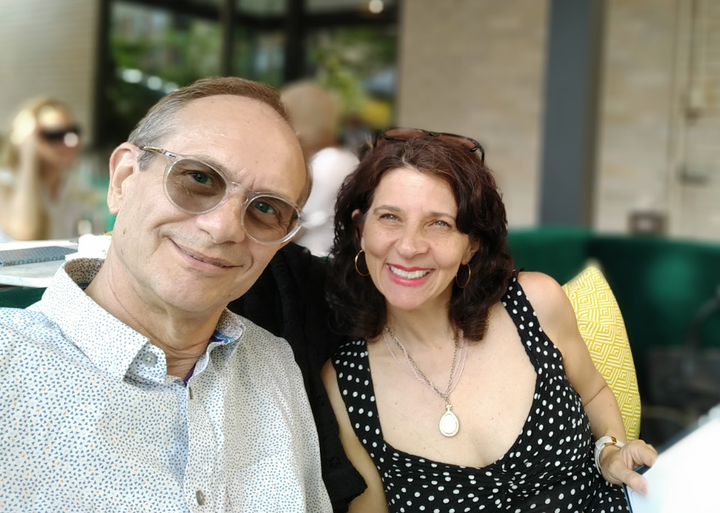
At the clinic, we meet our therapists, Sue and Tom. They explain their role as facilitators. We will have a total of six talk therapy sessions before and after two daylong MDMA dosing sessions. Neither they nor the medicine will be doing the work — Laura and I will. Research shows that MDMA shuts off the fight, flight or freeze responses that hijack a person’s nervous system. This allows the brain to rewire itself. We might want to address a specific issue, but the mind will bring up whatever it needs in order to heal.
This isn’t micro-dosing to self-medicate. It’s a full-on, FDA-approved medical intervention by trained professionals.
When we arrive for our first dosing session, Laura and I are led to separate rooms by our therapists. A sunrise seascape hangs on the wall above a futon bed in my room. They encouraged us to bring items to make the room more conducive to the experience, so I unpack and place around the room pictures of Laura and my daughters, a colourful Mexican blanket, fossils, crystals, a bell, and mementos of Algeria and Italy, where I taught English as a second language as my first job out of grad school.
I lie down. Tom spreads a weighted blanket over me, then fits me for headphones and an eye mask to shut out visual stimuli. He reviews the protocol — stay with the emotions and feel where they appear in my body. If I invite him, he will hold my hand or touch my arm or shoulder, only for support — no hugs.
The principal investigator, an oncologist, arrives. He carries a small, handmade ceramic cup of water and a matching bowl containing two capsules of MDMA. He offers them to me to signal the beginning of my trip. It seems more than just a hat tip to the traditional practitioners who use similar substances in healing rituals, and it focuses my mind on the session.
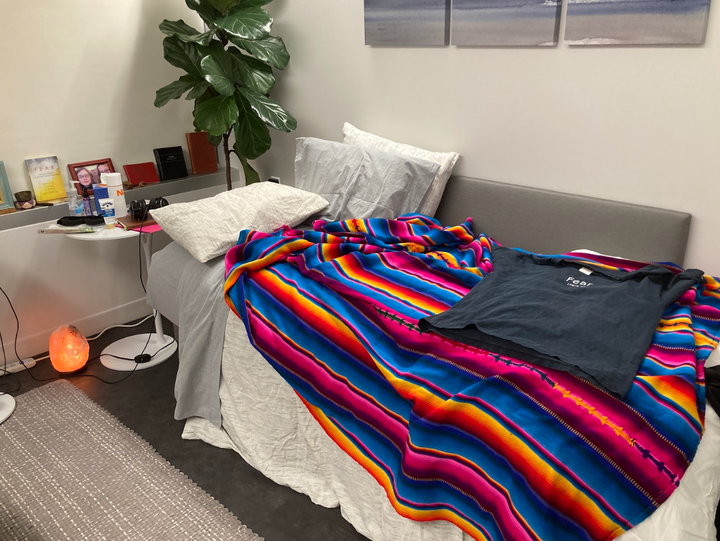
Settling back, I don the eye mask and Tom puts on a playlist. First I hear birds chirping and then a soothing mandolin. This is the start of an eight-hour playlist of curated songs that I later learn have been chosen by global neurobiologists, musicologists and psychologists. The pieces were selected based on their emotional intensity to complement the effects of the medicine during its onset, climax and fading.
After about 30 minutes, vivid memories start coming. I am a boy of 8. My father and I are in a funeral home. He has brought me to view a friend’s son who had died. Dad leads me to the casket, where we kneel to pray. Looking in the coffin, I freeze in terror: The boy is my age. Suddenly I feel a presence. I say out loud, “Death is here.”
Now I see this is what starts my lifelong dread of dying, which gets triggered by every CT scan. I am angry at my father for bringing me here and then leaving me alone in the back seat of the car as we drive home in silence. But I’m not scared anymore. Instead, I say, “Dad, why ever did you take me there?” He apologises and says he wanted to support his friend, and it scared him too. He says he loves me and he never wants anything bad to happen to me.
I realise MDMA has just allowed me to rewrite the script of a major traumatic life experience. Death suddenly loses its sting.
For the rest of the session, I watch traumatic events from my whole life pass before me the same way — nearly drowning at the age of 3, being mauled by dogs, a burst appendix, rejection by lovers, my daughter’s high school tribulations, my divorce, bullying bosses, the loss of jobs, and, of course, my tumour. Each time, I say to myself, “Yeah, that was tough, but it’s over now.” These memories no longer have any power over me.
Then I begin remembering good times. I re-experience the joy of holidays at my Hungarian and Belgian immigrant grandparents’, my first kiss, getting my letter sweater for swimming in high school, living in a bookstore in Paris, dropping acid in Roman ruins, getting a Fulbright in Italy, the births of my daughters, working in over 40 countries, my first date with Laura, and our wedding day. These memories prove I am not the unlovable, incompetent loser I have felt in the deepest throes of depressive episodes.
It feels like someone just hit the reset button on my brain.
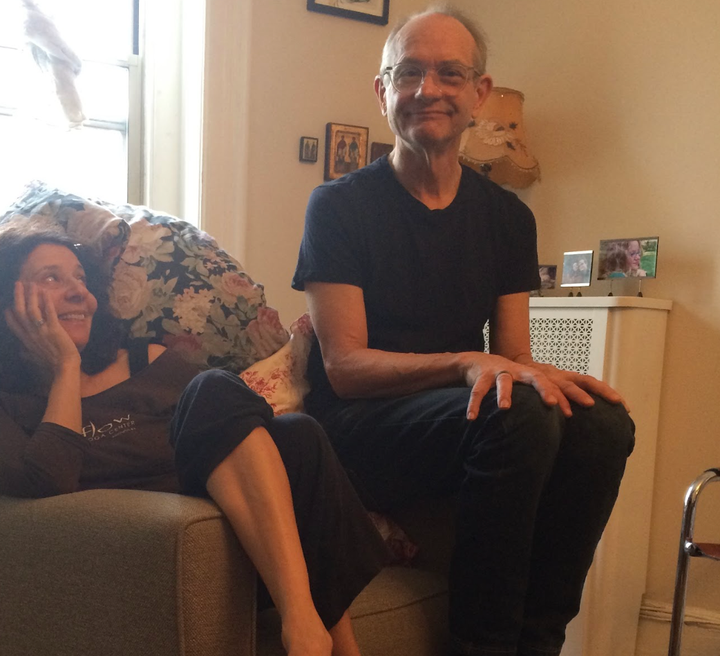
The next morning, we meet with Sue and Tom. They say we might feel the effects of MDMA for several days and suggest we spend the next few days in nature, journaling, or doing something artistic. Laura and I compare notes on a long walk beside the Potomac River. We can’t wait for the next trip.
The week before our next session, the coordinator for the clinic calls. A staff member’s spouse has tested positive for COVID. Would we mind delaying the session for a week? After agreeing, we hang up and then realise that we’ll be dosing on Valentine’s Day. We take this as a good sign. After all, ecstasy was known as the “love drug” during the 1980s rave years. This is apt. Scientists have since found that MDMA causes the body to produce more oxytocin, the hormone that strengthens the attachment in couples and between mothers and their babies.
For our second session, Laura and are in the same room. We lie on our beds in opposite directions so we can see each other. Tom and Sue sit between us, close by our heads. We laugh when they remind us that we can hold hands but not hug. Are they afraid we’ll get too frisky?
About an hour after dosing, I am transported to a decade of intense suffering and I watch my first marriage unravel. For the first time, I acknowledge the part I play. My hand shoots from under the covers in search of Tom’s. He grasps mine firmly, and I weep over the stress the divorce causes my daughters. When the grief subsides, I tell Tom how I vowed to make amends and am happy and proud that they are now back in school working on advanced degrees.
The music becomes more sensual. The sounds of sitars transport me back to the psychedelic 1960s of my youth, when the Beatles dropped acid, went to India, studied meditation, and incorporated the country’s melodies, philosophy and rhythms into their songs. Through the headphones comes a man’s voice chanting a song of devotion.
The area around my heart grows warm. The MDMA is opening my heart to Laura.
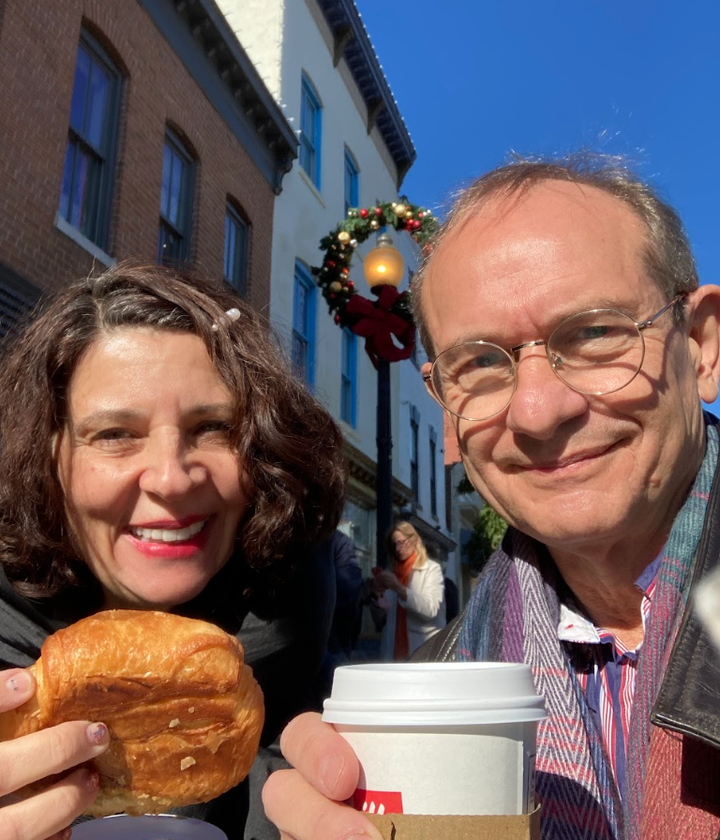
There are more memories. Laura and I are in a hospital recovery room. The doctor is telling me I have pancreatic cancer. Laura is under a deadline to finish a memoir about her quest to find the cause of the pain she feels whenever we make love. She doesn’t know whether it is physical — the result of menopause — or psychological, caused by the trauma from being sexually molested in her Brooklyn neighbourhood by a playmate’s grandfather when she was 4.
Her mother, who survived Auschwitz, offered her no comfort at the time. “What do you expect?” she had said. “That’s what men are like. Stay away from him.” I feel guilty watching her sit down to write late into the night after exhausting days spent ferrying me to doctors’ offices. She toughs it out, turns in her manuscript on time, and it is published a few months after I am declared cancer-free. Unfortunately, COVID lockdown starts a few months later and torpedoes her book tour.
Despite her own trauma and my many mean moods, Laura remains an optimistic survivor. The medicine takes me back to a theatre where I watch her performing her play “Married Sex,” which reveals intimate details of our sex life. I am embarrassed and sink down in my seat. Later, I shout at her for putting our problems out there for anyone — including friends and family — to see. Now, on MDMA, I see she has written the work to heal her trauma, so we can have a healthy sex life. The play, and the book she later turns it into, is one long love letter to me.
Soon, both Laura and I are sitting up in our beds. We gaze lovingly into each other’s eyes and express our undying love. We acknowledge the pain of the last four years and vow to support each other as we grow old together.
When the session ends, Sue and Tom leave the room. They return carrying a tray of blueberries, strawberries, grapes and chocolate — in honour of St. Valentine’s Day, of course.
“Will this last?” we ask. They remind us that we will continue to integrate the lessons of the session over the next few days and perhaps weeks and months.
They urge us to use the tools they taught us. So, since then, when we feel overwhelmed by unhelpful emotions, we practice breathing and other relaxation techniques. At any sign of conflict, we use a healthy communication model they showed us. We take weekly walks in nature to get out of our heads and into our bodies. After finding their playlist on Spotify, we listen again to particular pieces that brought profound insights.
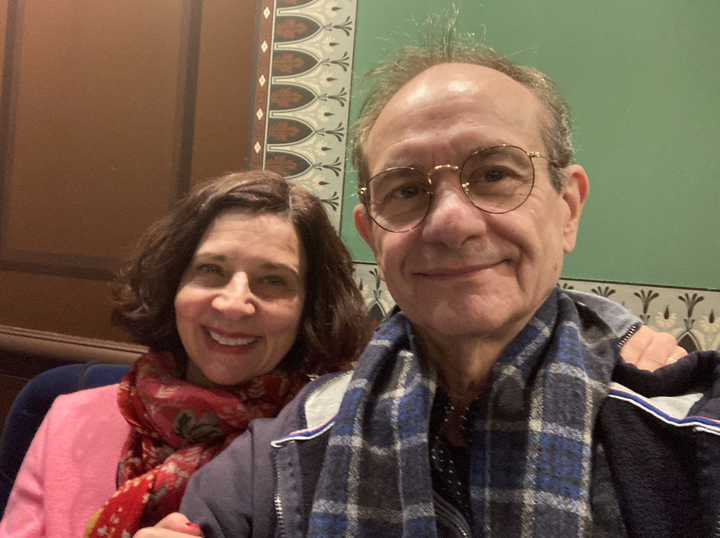
Keeping depression at bay and having a loving relationship will still require attention, but after MDMA, it no longer seems like work.
Too old to have been a raver, I never thought I’d take ecstasy — let alone with my wife in a clinic, with a therapist by my side. I am so happy I did. It has truly transformed my outlook on cancer, death and my marriage.
The Food and Drug Administration is on the verge of approving MDMA to treat PTSD because of rigorous studies like the one Laura and I got into. It may not be right for or help everyone — it can be harmful to people with certain physical or mental conditions — which is why it should only be taken in a therapeutic setting under the supervision of trained professionals. But I truly believe it and other psychedelics can offer healing in ways that other approved methods cannot, and in my own case could not.
I return to the hospital for my three-month CT scan. In the days before, I scarcely think about it. I have a nice chat with the radiologists, who are happy to see me. Back home a few hours after the scan, Laura and I read the results in my medical portal: “Status post distal pancreatectomy and splenectomy. No evidence of recurrent malignancy in the abdomen. Remaining pancreas is normal in appearance.”
Not only am I still in remission, but I am happy — in a way I have not been in years! That night, in the very same room where I once lay on the floor sobbing, Laura and I play KC and the Sunshine Band’s “Get Down Tonight” as high as we can crank it, dancing for joy. Or, you might say, in ecstasy.
Kurt Nemes worked in over 40 countries for an international development bank. His writing has appeared in The Washington Post, HuffPost, Purple Clover, and the anthology, “How Does That Make You Feel. True Confessions from Both Sides of the Therapy Couch.” He teaches Tai Chi and is currently working on a memoir entitled “How I Survived Surviving: Staying Sane After a Serious Diagnosis.”